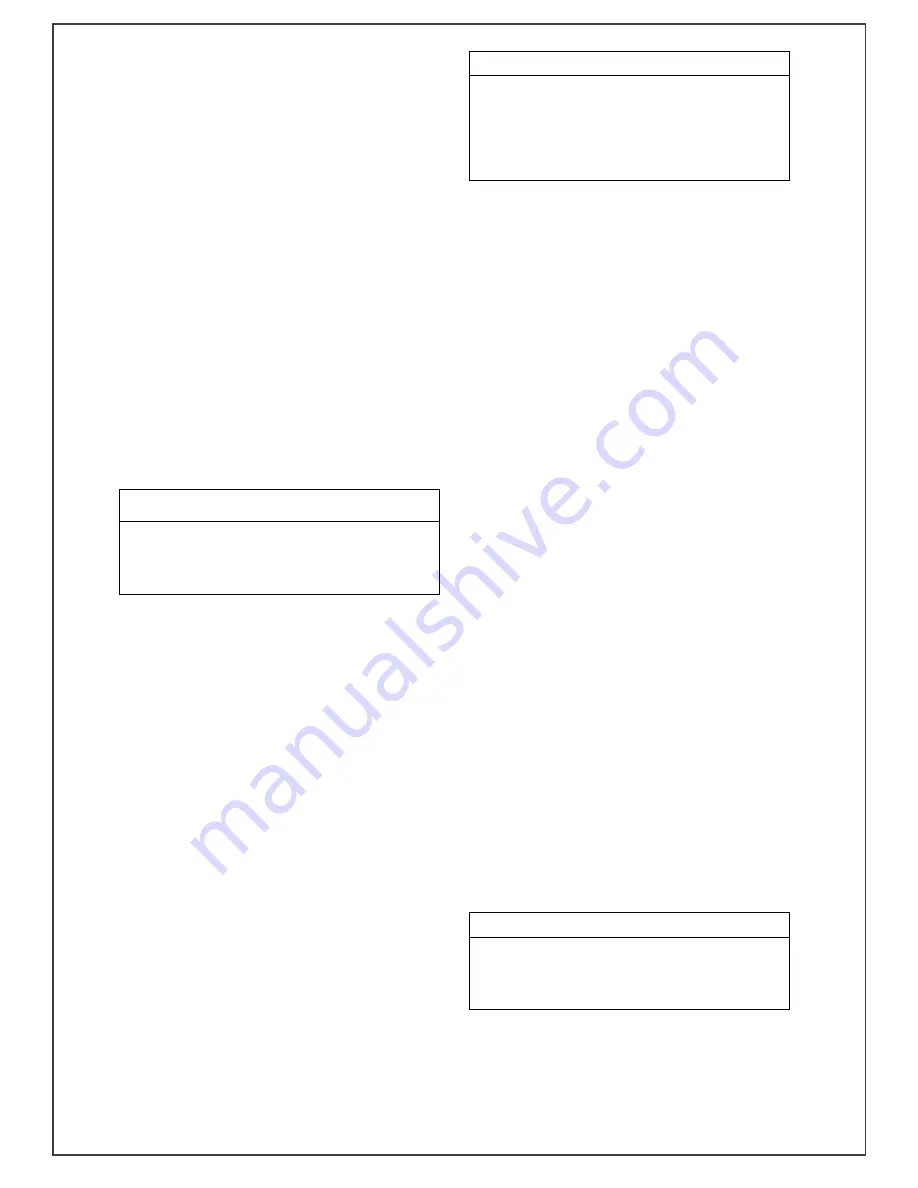
Where:
F - chimney cross-section (sq m)
Q - heater thermal capacity (kW)
h - height of chimney measured from the burner
level to the exit (m)
It is important for the chimney to start at floor level,
as the exhaust fumes emerging from the heater
should have the option of 'bouncing back'. It is also
important for the lower part of the chimney to have
an inspection opening that can be sealed tight.
The chimney should stand at least 1.5 metres (five
feet) above the roof surface. The walls of the
chimney should be smooth, tight, without any narrow
passages or turns and free from any other
connections. A new chimney needs to be dried and
heated sufficiently before the heater is fired. In case
of doubt, the technical condition shall be evaluated
by a chimney specialist. Steel pipe chimneys should
be taller than masonry chimneys by 15-20%.
Maintenance of the chimney duct within its
recommended limits is one of the more important
factors guaranteeing the achievement of appropriate
technical and operational parameters of the heater.
NOTE!
Due to their high effectiveness, it is
recommended to use chimney liners made of
stainless steel thermal heat-resistant steel for
7. Heater operation and maintenance
7.1. Initial heater start-up
Before start-up of the heater, inspect as follows:
chimney system tightness
chimney connection correctness
tightness of ventilator contact surfaces and
inspection openings
manner of connection to the electric grid
The boiler start-up procedure is as follows:
switch on the heater
light up the burner according to this manual
recheck heater tightness
acquaint the user with the operation of the
unit
note data in the warranty card
HINT!
The conclusion of installation and the
execution of a heating trial need to be noted in
the warranty card. The completed warranty
card should be sent by the user, as copy, to
the address of the manufacturer so the user is
registered in the company system.
7.2. Heater start-up and use (User instructions)
Before commencing burner start-up, check:
that system ducts are free from
obstructions
that the ventilation system works
properly.
1. If this is a repeated start-up, remove the ash
collected in the loading chamber. The charcoal
remaining in the chamber can form the first start-up
layer.
2. Lay out on the remains of the charcoal a layer of
wood, not filling more than 50% of the grid.
3. From the topside, lay out a layer of minute pieces
of wood with some bunched-up paper. Afterwards
add a layer of wood chippings and some pieces of
soft wood.
4. The heater should be started up by switching the
control unit on.
5. Light the paper, and after it catches fire, close the
loading door, leaving it slightly open for a few
seconds.
6. In order to ease distribution of a higher volume of
air during start-up, set the volume of primary air by
extracting and pushing in the ash tray.
7. When the wood catches fire well (after about 20-
30 minutes), fill the chamber with an appropriate
amount of wood so that the loading chamber is
approx. 60% full, and close the loading door.
8. The next steps in the burning process entail
continued supply of fuel and controlling the burning
process by adjusting the primary air volume by
extracting and pushing in the ash tray.
9. Never leave the heater unattended!
NOTE!
It is forbidden to disconnect the power supply
from the device when it is hot, because the
collected energy can damage the ventilator
and heat exchanger!
the
FHSPN
series heaters.
Summary of Contents for FHSPN 35
Page 1: ......


























